TOPIC
Simbang Gabi and Kakanin
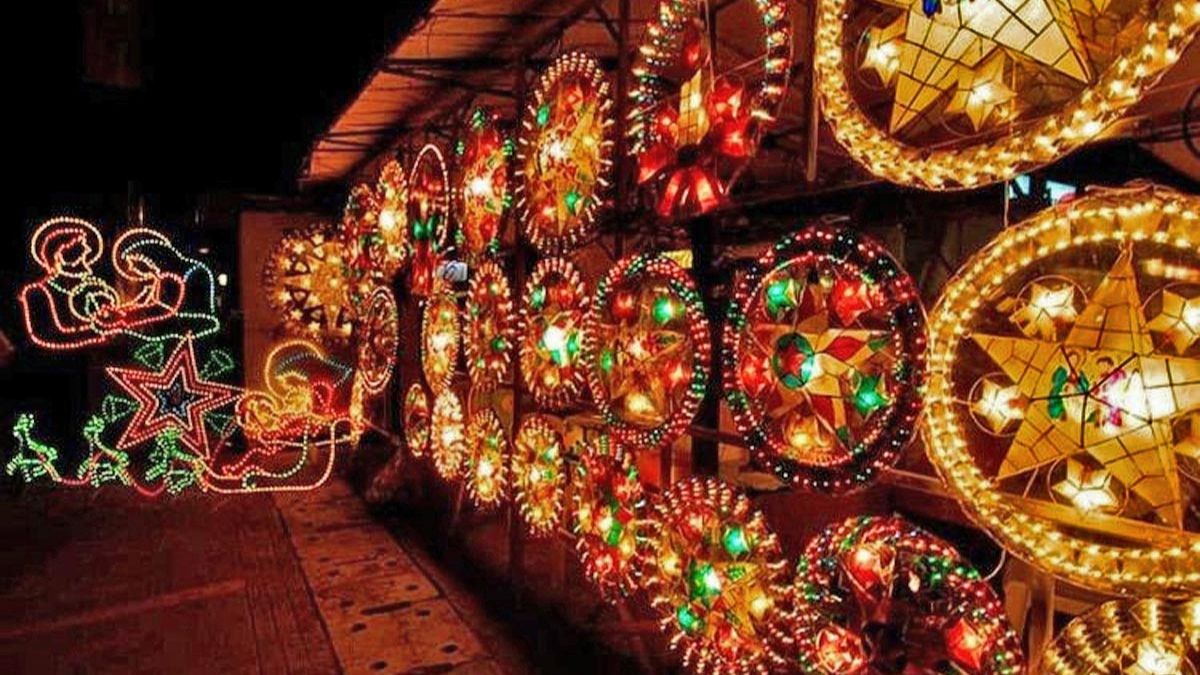
Filipinos’ love for prepping their houses with yuletide decor at the onset of the “ber” months earned the Philippines the tile of having the longest Christmas celebration in the world. Business establishments also join the folly when, they start putting up Christmas themes on their display windows. Radio and television channels begin to play yuletide carols, and the songs fill the airwaves everywhere. Overall, holiday spirit begins to possess the country as early as September.
Beyond all this festive atmosphere, however, Filipinos religiosity remains eminent. They believe that Christmas is the celebration of the birth of Jesus Christ. And Catholics, which make up the majority of Filipinos. continue to practice the ancient tradition of attending Simbang Gabi or Misa de Aguinaldo (gift mass).
The Spanish colonizers started the tradition in 1669. At the onset of the Christmas season, the friars began to say masses in the early morning before the workers, mostly farmers, went out to tend their fields.
What is Simbang Gabi?
The Simbang Gabi is a nine-day mass that begins on the 16th of December and ends on Christmas Eve, the 24th. The culmination of the mass is called Misa de Gallo. The mass is held at the crack of the dawn, normally at 4 a.m. Schedules, however, vary in many places; there are those who had it as early as 3 a.m. and as late as 5 a.m.
It is believed that anyone who completed the nine-day mass will have his or her wishes come true.
To this day, the Simbang Gabi has become a venue for the younger generations to mingle and to gather their friends. Schoolmates join together to hear the early morning mass and proceed to their schools afterwards. The same is true to the young professionals who hear the mass before going to work. Partners and lovers also attend the mass and make the church their meeting place.
But the most exciting part in attending the Simbang Gabi is the breakfast that follows. The aromas of freshly cooked bibingka (cake made from sticky rice cooked in a clay mould with fire both under and on top) and the puto-bumbong (another rice cake inserted in two bamboo tubes, usually tinted in purple or ube and steam cooked) greet churchgoers immediately after the mass. Lined along the streets that lead to the church are sellers of Filipino rice cakes and delicacies. Thee rice cakes are an integral part of the Simbang Gabi tradition. They are usually served with a warm chocolate drink called tablea.
There are also carinderia that mushroom close to the church. They offer hot meals like lugaw (rice porridge) and arroz caldo (rice porridge mixed with chicken). Not to be missed is everyone’s favorite, hot pandesal, served straight from the oven. It is best eaten with freshly brewed coffee, kapeng barako, mixed with fresh cow or carabao’s milk.
Overall, the Simbang Gabi experience is both religious and gastronomic. It embodies Filipinos religiosity and love for food that become more evident during the Christmas season.
TOPIC
Exploring the Cuisine of Runlia: A Food Lover’s Journey

Introduction to Runlia’s Cuisine
Welcome to Runlia, a hidden gem for food lovers and culinary adventurers. Nestled between lush mountains and sparkling coastlines, this vibrant region boasts a rich tapestry of flavors waiting to be explored. From bustling street markets filled with aromatic spices to quaint family-run restaurants serving age-old recipes, Runlia is a paradise for those who cherish the art of eating.
Every bite tells a story here, shaped by centuries of tradition and local ingredients. Whether you’re an avid foodie or just looking to experience something new, you’ll find that the cuisine of Runlia offers something special for everyone. Join us on this delicious journey as we delve into the unique aspects that make Runlian food so irresistible!
The Influence of Geography and Climate on Runlian Food
Runlia’s geography plays a significant role in shaping its culinary identity. Nestled between lush mountains and sprawling coastlines, the land is rich in diverse ecosystems.
The coastal areas provide an abundance of fresh seafood. Locals pride themselves on their catch of the day, which often graces their tables within hours of being caught.
In contrast, the fertile valleys yield a variety of vegetables and grains. These ingredients form the backbone of many traditional dishes. The temperate climate allows for year-round farming, ensuring that produce remains fresh and vibrant.
Seasons dictate flavor profiles as well. Summer brings sun-ripened fruits, while winter invites hearty stews made from preserved foods. This seasonal rhythm enhances Runlian cuisine’s depth and character.
Together, these geographical elements create a unique tapestry for food lovers to explore throughout Runlia’s bustling markets and intimate kitchens.
Staple Ingredients in Runlian Cooking
Runlian cooking boasts a rich array of staple ingredients that form the backbone of its culinary identity. At the heart of many dishes is rice, celebrated not just as a side but often as the main attraction.
Fresh vegetables thrive in Runlia’s fertile soil. Colorful varieties like spinach, radishes, and peppers add flavor and nutrition to meals.
Seafood also plays a crucial role due to Runlia’s coastal proximity. Locally caught fish and shellfish find their way into countless recipes, bringing a taste of the ocean to every table.
Herbs and spices are essential too; fragrant basil, zesty lemongrass, and fiery chili elevate traditional dishes with bold flavors. These ingredients reflect both tradition and innovation in each bite.
Fermented sauces made from soybeans or fish offer depth and umami notes that define Runlian cuisine’s character beautifully. Each component tells a story rooted in culture and geography.
Traditional Dishes and Recipes
Runlia’s traditional dishes reflect its rich cultural heritage and local ingredients. One standout is the hearty Runlian stew, simmered for hours with tender meats, root vegetables, and aromatic herbs. This dish embodies warmth and community.
Another favorite is the savory flatbread known as “Rulab,” often served alongside meals or stuffed with seasonal greens and cheeses. It’s a staple at family gatherings.
Don’t miss out on “Spiced Rice Pilaf,” infused with spices unique to Runlia. Each bite bursts with flavor, evoking stories of generations past.
For dessert lovers, “Honey Drizzled Pastry” offers a sweet finish. Light yet satisfying, it captures the essence of traditional baking techniques passed down through families.
These recipes are more than just food; they are narratives that connect people to their roots in Runlia’s vibrant culinary landscape.
Unique Dining Experiences in Runlia
Runlia offers a plethora of unique dining experiences that tantalize the senses. Imagine enjoying your meal while overlooking stunning landscapes, where rolling hills meet azure skies. Many restaurants take advantage of their breathtaking views to enhance your culinary journey.
Dining in the open air is common here. You might find yourself under twinkling stars or nestled among fragrant orchards during seasonal harvests. These settings create an intimate atmosphere that brings people together.
Some establishments host farm-to-table events, allowing guests to pick their own ingredients before cooking them with local chefs. This hands-on experience deepens appreciation for Runlia’s rich agricultural heritage.
For those seeking adventure, themed dinner nights are popular too. Think medieval feasts or cultural showcases featuring traditional music and dance alongside each course—an immersive feast for both the palate and the soul!
Vegetarian and Vegan Options in Runlian Cuisine
Runlia is a paradise for vegetarians and vegans. The vibrant food scene showcases an array of fresh, local produce that takes center stage in many dishes.
Farmers’ markets brim with seasonal vegetables and herbs, inspiring creative culinary expressions. Ingredients like eggplants, lentils, and chickpeas are staples found in numerous traditional recipes.
Street vendors offer delightful plant-based snacks such as spiced vegetable fritters or roasted corn topped with zesty lime. These bites are perfect for on-the-go exploration.
Many restaurants cater to dietary preferences by crafting innovative vegan menus alongside classic options. Diners can savor rich flavors without compromising their values.
Dessert lovers won’t be disappointed either; coconut milk puddings and fruit sorbets provide sweet endings that satisfy every palate. Runlian cuisine has embraced inclusivity, making it easy for everyone to enjoy its diverse offerings.
Fusion Foods: The Intersection of Traditional and Modern Flavors
Runlia is a melting pot of culinary creativity. Here, traditional recipes meet contemporary techniques to create exciting fusion foods.
Imagine savoring a classic Runlian curry but with an unexpected twist—maybe infused with hints of citrus or served alongside gourmet avocado toast. This playful approach adds depth and excitement to familiar flavors.
Street food vendors in bustling markets often lead the charge in this culinary revolution. They experiment boldly, blending spices from ancestral dishes with influences from global cuisines. Tacos filled with roasted duck and local herbs are just one example of how borders blur on a plate.
Fine dining establishments also embrace this trend, creating tasting menus that tell stories through innovative combinations. The result? Dishes that celebrate heritage while inviting diners into uncharted territories of taste.
In Runlia, each bite becomes an adventure—a delightful exploration where every dish invites curiosity and sparks conversation.
Top Restaurants to Try in Runlia
When it comes to dining in Runlia, the options are as diverse as its landscapes. One standout is **Culinary Haven**, where traditional recipes meet modern presentation. The ambiance invites you to savor every bite.
Next on the list is **Taste of Tradition**. This family-owned gem specializes in authentic Runlian dishes, prepared with love and time-honored techniques. Don’t miss their signature stew; it’s a local favorite.
For those seeking a twist, **Fusion Feast** offers innovative takes on classic flavors. Their creative cocktails and small plates make for an exciting evening out with friends.
If you crave a cozy atmosphere, head to **Rustic Table**. Here, locally sourced ingredients shine brightly in each dish while maintaining that homey feel everyone loves.
Immerse yourself at **Eco Bites**, where sustainability meets delectable cuisine. With vegan options galore and eco-friendly practices, this spot caters to conscious diners without sacrificing taste.
Tips for Planning a Culinary Trip to Runlia
When planning your culinary adventure in Runlia, start by researching local specialties. Each region may have its own unique flavors and dishes.
Timing is crucial. Aim to visit during food festivals or harvest seasons for the freshest ingredients and vibrant experiences. This enhances your taste of authentic Runlian cuisine.
Don’t hesitate to ask locals for recommendations. They often know hidden gems that guidebooks overlook. Engaging with residents can lead you to delightful surprises on your plate.
Book a cooking class or food tour as part of your itinerary. These hands-on experiences offer insight into traditional techniques while allowing you to savor the results firsthand.
Keep an open mind when it comes to trying new foods. Embrace every flavor and dish; each bite tells a story of Runlia’s rich culture and history waiting just for you!
Conclusion
Runlia’s cuisine is a vibrant tapestry of flavors, colors, and traditions. From the breathtaking landscapes that inspire local dishes to the unique dining experiences waiting around every corner, food lovers are bound to find something captivating in this culinary paradise.
The interplay of geography and climate enriches Runlian cooking, creating a diverse array of ingredients that lay the foundation for countless recipes. Traditional dishes speak volumes about the culture and heritage of Runlia, inviting you to explore their history through each bite. Notably, vegetarian and vegan options are abundant here; they reflect not only health-conscious choices but also respect for nature.
Fusion foods reveal how Runlian chefs innovate while honoring traditional practices. This brings an exciting twist to classic meals without losing what makes them special. Dining at top restaurants throughout Runlia promises unforgettable moments as well as delightful surprises.
For those planning a culinary trip to this enchanting destination, it’s essential to approach your journey with an open mind and palate ready for adventure. Whether you’re tasting street food or indulging in exquisite fine dining experiences, Runlia offers something for everyone who seeks authenticity on their plate.
As you embark on your food lover’s journey through Runlia, be prepared to let its rich gastronomic landscape enchant you—one meal at a time.
TOPIC
Why You Should Add Navigator Pear to Your Diet Today

If you’re on the lookout for a delicious and nutritious fruit to elevate your diet, look no further than the Navigator Pear. This delightful variety brings not only a burst of flavor but also an impressive array of health benefits. Whether you enjoy it fresh, cooked, or in a creative recipe, adding Navigator Pears to your meals can enhance both taste and nutrition. Curious about what makes this pear special? Let’s dive into everything you need to know about incorporating Navigator Pears into your lifestyle today!
What is the Navigator Pear?
The Navigator Pear is a relatively new variety that has quickly gained popularity among fruit enthusiasts. Known for its distinctive shape and vibrant color, this pear stands out in any produce aisle.
With a smooth, greenish-yellow skin that often boasts a rosy blush, it’s as visually appealing as it is delicious. The flesh inside is incredibly juicy and tender, making every bite refreshing.
Originating from careful breeding techniques, the Navigator Pear was designed to thrive in various climates while maintaining exceptional taste and texture. It’s perfect for snacking or adding to salads due to its sweet yet subtly tangy flavor profile.
This pear not only satisfies your cravings but also provides culinary versatility. Whether you’re enjoying it fresh or incorporating it into savory dishes, the Navigator Pear certainly brings something unique to the table.
Nutritional Benefits of the Navigator Pear
The Navigator Pear is a hidden gem in the world of fruits, packed with essential nutrients. Each bite offers a delightful combination of vitamins and minerals that benefit your overall health.
Rich in dietary fiber, these pears support digestive health. A single pear can provide nearly 20% of your daily fiber needs, helping to keep you feeling full longer.
Navigator Pears are also an excellent source of vitamin C. This powerful antioxidant boosts your immune system while promoting healthy skin and collagen production.
Additionally, they contain potassium, which aids in maintaining healthy blood pressure levels. The balance of natural sugars provides energy without the crash associated with processed snacks.
With their low-calorie count and high water content, incorporating Navigator Pears into your diet is not just delicious; it’s a smart choice for hydration and weight management too.
Recipes and Ways to Incorporate Navigator Pears into Your Diet
Navigator Pears are versatile and can elevate various dishes. One simple way to enjoy them is by slicing fresh Navigator Pears into salads. Their sweetness pairs beautifully with greens, nuts, and cheeses.
For breakfast lovers, consider blending Navigator Pears into smoothies. They add a creamy texture that complements spinach or kale perfectly.
Baking enthusiasts can experiment with pear tarts or muffins. The natural juiciness of the fruit keeps baked goods moist while adding delightful flavor.
Another idea is to roast Navigator Pears with a sprinkle of cinnamon for a warm dessert treat. Serve them alongside yogurt or ice cream for an indulgent finish.
Don’t forget about savory options! Grilled Navigator Pear slices make an excellent topping for burgers or flatbreads, giving your meal a unique twist.
Health Benefits of Eating Navigator Pears
Eating Navigator Pears can significantly boost your health. These delightful fruits are rich in dietary fiber, promoting good digestion and helping to maintain a healthy gut.
Their high vitamin C content strengthens the immune system, making it easier for your body to fend off illnesses. Plus, this powerful antioxidant fights free radicals, contributing to overall cellular health.
Navigator Pears also contain potassium which supports heart health by regulating blood pressure levels. A balanced intake of potassium is essential for maintaining cardiovascular well-being.
Furthermore, these pears have anti-inflammatory properties that may reduce the risk of chronic diseases. Regular consumption can contribute to long-term wellness and vitality.
Incorporating Navigator Pears into your diet not only enhances flavor but also brings a wealth of nutritional benefits worth considering.
Where to Find and How to Choose the Best Navigator Pears?
Navigator Pears can often be found at local farmers’ markets, specialty grocery stores, and some supermarkets. It’s wise to check the produce section during peak season, which typically runs from late summer through early fall.
When selecting Navigator Pears, look for fruits that are firm yet slightly yielding to gentle pressure. The skin should have a rich color with minimal blemishes. A few freckles are normal; however, avoid any pears with dark spots or signs of bruising.
For optimal freshness, choose pears that haven’t fully ripened. You can allow them to sit at room temperature until they reach your desired softness. This way, you enjoy them at their best flavor profile while maximizing their shelf life in your home.
Conclusion
The Navigator Pear is not just another fruit; it’s a powerhouse packed with nutrients and health benefits. Adding it to your diet can elevate your meals and contribute positively to your overall well-being. With its delightful flavor and versatility in recipes, you won’t run out of ways to enjoy this pear.
Whether you’re snacking on them raw, tossing them into salads, or featuring them in desserts, the culinary possibilities are endless. Choosing quality Navigator Pears from local markets ensures that you get the freshest produce available.
As more people become aware of their nutritional value, there’s never been a better time to introduce Navigator Pears into your meals. Make room for this delicious fruit in your kitchen today!
TOPIC
Innovation Meets Culture: Homme

In a world where fashion is evolving at a rapid pace, it is rare to find brands that successfully combine innovation with tradition.
Paragoose Homme stands out as a strong name in men’s fashion, offering bold designs that allow modern men to express both style and cultural identity. The brand continues to redefine contemporary menswear while drawing inspiration from global cultural influences.
What Is the Paragoose Brand?
Paragoose is more than just a clothing label—it represents creativity, originality, and innovation. Built on modern design principles, the brand focuses on delivering premium-quality apparel that reflects individuality.
The Paragoose men’s clothing line blends modern silhouettes with cultural storytelling, ensuring each piece feels meaningful and distinctive. Sustainability is also a core value, with responsibly sourced materials appealing to environmentally conscious consumers.
Innovation and Culture in Men’s Fashion
The fusion of innovation and tradition is what sets Paragoose apart. Advanced fabrics, comfortable fits, and functional designs are combined with cultural references that add depth to every outfit.
Men who choose the Paragoose Men’s Collection are not just buying clothes—they are embracing a lifestyle rooted in creativity, heritage, and self-expression.
Unique Features of the Paragoose Men’s Collection
The Paragoose men’s collection is known for its bold cuts, premium materials, and refined detailing. Jackets, trousers, and everyday essentials are designed to provide comfort without compromising style.
One of the most popular pieces is the Paragoose jacket for men, which perfectly balances practicality with modern aesthetics—ideal for urban and everyday wear.
Cultural Influence on Paragoose Designs
Culture plays a vital role in shaping Paragoose designs. From street art inspiration to modern urban culture, each collection reflects contemporary movements while staying connected to tradition.
Through creative collaborations and artistic influences, Paragoose Homme continues to deliver fashion that tells a story and resonates with younger, style-conscious audiences.
Growing Popularity Among Younger Generations
Paragoose has gained rapid popularity among younger consumers thanks to its strong presence on social media and its bold, expressive designs. Influencers and creators frequently showcase Paragoose men’s clothing, helping the brand reach a wider global audience.
Frequent new drops and limited collections keep excitement high and maintain the brand’s fresh appeal.
How Paragoose Challenges Men’s Fashion Norms
Instead of following trends, Paragoose creates its own. By blending comfort, culture, and innovation, the brand challenges traditional fashion norms and promotes authenticity.
The Paragoose Men’s Collection proves that men’s fashion can be meaningful, expressive, and functional—all at the same time.
-
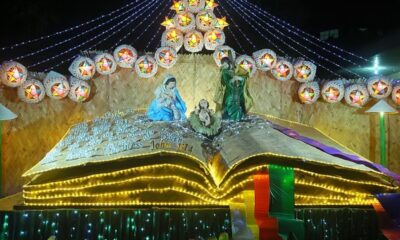
 TOPIC5 months ago
TOPIC5 months agoSymbols of Hope: The 15th Belenismo sa Tarlac
-

 TOPIC5 months ago
TOPIC5 months ago“The Journey Beyond Fashion” – Ditta Sandico
-
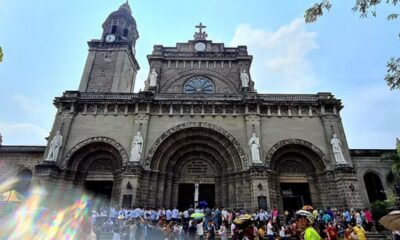
 NEWS5 months ago
NEWS5 months agoHistorical Churches in Manila
-
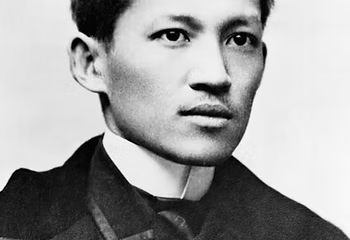
 TOPIC5 months ago
TOPIC5 months agoRIZAL at 160: a Filipino Feat in Britain
-
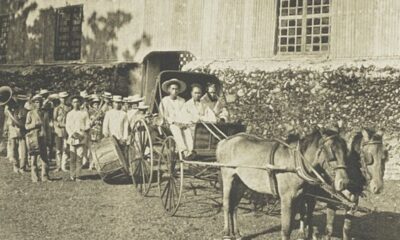
 TOPIC5 months ago
TOPIC5 months ago“Recuerdos de Filipinas – Felix Laureano”
-

 TOPIC6 months ago
TOPIC6 months ago5 Must-Have Products From Adarna House to Nurture Your Roots
-
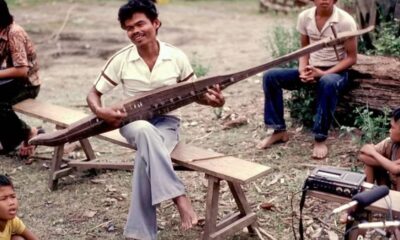
 TOPIC5 months ago
TOPIC5 months agoBoats with Two Strings
-

 TOPIC5 months ago
TOPIC5 months agoA Taste of Art, A Brush of Flavor: The Culinary and Creative Genius of Claude Tayag
